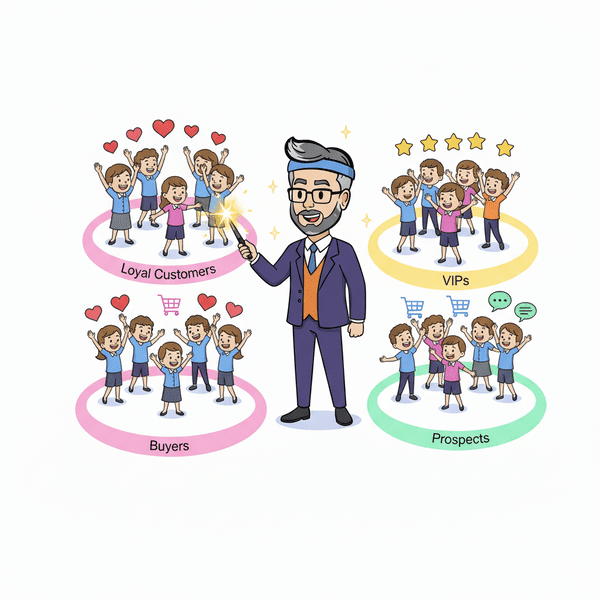Definition: Dynamic segmentation is a data-driven approach to arranging customers into groups based on current behavior trends, interactions, and characteristics. This is unlike static segmentation, which relies on fixed criteria which updates continuously as new customer data becomes available. This allows businesses to personalize their marketing efforts, improve customer experiences, and increase their conversion rates. Examples include AI-driven customer groups, real-time email list segmentation, and behavior-based advertising.
Example in a Sentence: By using dynamic segmentation, the e-commerce brand personalized its promotions based on customer browsing behavior, increasing engagement and sales.
Why is Dynamic Segmentation Important?
1. Personalized Customer Experiences

This type of segmentation allows businesses to deliver relevant messages and offers, improving their customer satisfaction and loyalty.
2. Real-Time Adaptability
Because segmentation updates continuously, businesses can respond quickly to changing customer behaviors and current market trends.
3. Higher Conversion Rates
By targeting the right audience with the right message at the right time, businesses see increased engagement and sales.
Stay Ahead with Smart Segmentation
Smart segmentation allows businesses to move beyond one-size-fits-all marketing. By using real-time data and automation, companies can create personalized experiences that drive results.
More Definitions: Retargeting Definition, Customer Satisfaction Index Definition, Data Enrichment Definition, Biz Dev Definition and Boil the Ocean Definition.
Useful Posts: How AI is Transforming Customer Segmentation, Personalization Strategies to Boost Customer Loyalty























